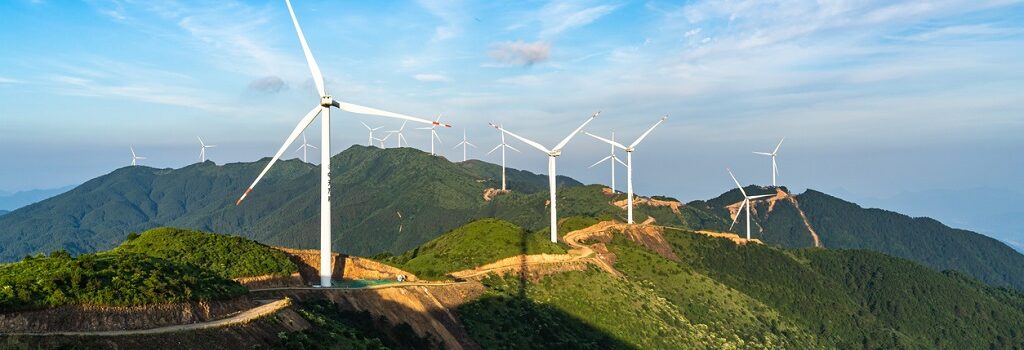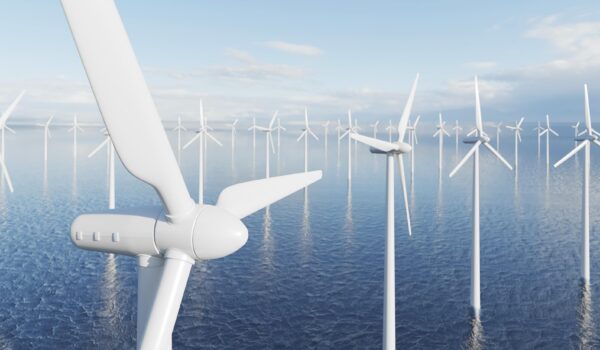China Market Update
The 20th National Congress of the Communist Party of China (CPC) saw notable advancements on policy and ambition in relation to renewable energy development within the country, but what could this mean for the corporate market?
A closer look at China’s Political and Economic Environment and what this means for RE development
The 20th National Congress of the Communist Party of China (CPC) commenced on October 16th, 2022, with more than 2,000 delegates participating. President Xi Jinping delivered a work report, describing the Party’s accomplishments since the previous Congress in 2017 and giving general guidelines for the next five years. The congress concluded with the announcement of the new central leadership for the next five years.
Green development is one of the top priorities for the next 5 years in President Xi’s speech. This means accelerated green development transition, setting the goals of cleaning up air, soil, and water pollution, and changing economic and energy structure. Establishing new energy capacity first before gradually controlling total carbon emission and fossil fuel consumption.
New Shanghai party secretary Chen Jining was appointed. Chen is the ex-Beijing Mayor who has served as the president of Tsinghua university and Minister of China Environmental protection. Appointing someone with academic and environmental engineering background as the party secretary of China’s financial hub signals the importance of environmental focus business and financial growth.
China has now commissioned several committees to develop Sustainability Standards fit for China such as the Zero Carbon China Standards, China ESG standards, Low carbon factory standards, Low carbon data center standards and low carbon science park standards, to name a few. These standards are planned to pilot in 2023 and 2024 in selected provinces and exchanges before a rolling out a wider adoption nationally.

Caption: China leading the race towards renewables
How do we see the China RE market develop in the next 5 years?
- Green Development is one of the top 5 priorities in the CPC’s 14th 5-year plan. Government focuses help drive the policy, and market supports in its development and implementation.
- Consolidated power at the party politburo level will allow the central government to move faster than before. Hence, we expect to see more green development-related policies drafted and issued at a faster rate compared to the past few years.
- China has been experiencing periodic power shortages. To support its ambition in GDP growth, a transition to renewables is inevitable. And the faster to reduce the dependency to fossil fuel the better to ensure energy supply stability. This is also taking on the lessons learnt from its western peers.
- GDP growth is still China’s number 1 priority. Over the next 5 years, the government is looking for a faster economic construct transition from being more labor intensive and low-cost manufacturer to being the supplier of high-tech and highly skilled workers, manufactures, or services. To achieve this, green technology will be one of its major focuses. It is already the largest solar panel exporter in the world. We expect to see focus on developing deep competencies in other green technology manufacturing and technology development, and advancement related to Green Energy or sustainability in general.

“The Race for Renewable Energy Domination. ”
Countries/Regions with the most govermental renewable energy R&D spending in 2019.
Any rapid and accelerated growth will come with its challenges. Fluctuating green energy pricing, uncertainty on whether some policies will be short or long term, are few obvious challenges China is, or will, be facing. Further challenges include:
- Geopolitical Stability: Relating to Taiwan, regarding foreign companies’ appetite for long term and larger scale investments.
- Human Rights: Issue in its border regions and territories
- Exchange Rate: Fluctuations making payback on large scale investments a challenge to forecast.
What are the general policy trends? How will they impact investment and options available in the market?
We see a trend to centralize major directional policies for a period before regional and provincial policy details are issued or clarified.
- We anticipate a short holding period until the new government is announced in March 2023, as provincial governments will likely await direction from the central government before the development and issue of actionable policies and guidelines.
- The policies will likely be developed and issued centrally at a directional level. We can expect these policies to be vague and high level. They will be intended to leave room for interpretation and the government will reserve the right to explain the policies as they see fit. At the regional and provincial level, local governments will then develop actionable guidance and policies. We expect tier 1 cities and their satellite cities and areas to be the pilot, as well as being the trend setters. As the new party secretary for Shanghai is already announced, we expect Shanghai and its surrounding cities and provinces to be first movers.
- Impacts on investment are likely to be friendly and positive. Shanghai is China’s financial hub and is incentivised to improve its international image, we expect the new policies will support the growth of its ambition in developing green economy.
- Possible options include strong and more comprehensive carbon trading, more opportunities in renewable energy procurement, carbon capture technology investment, and friendlier green financing conditions. Although these are speculations, they are the positive messages that Shanghai (and China as whole) needs to regain its position as a global financial center.
- As overseas demand in accelerating the renewable energy transition grows, China will not miss these opportunities to play strengthen its position as a major exporter. However, in this phase of China’s economic growth, we expect to see export of more high-tech products and services. It is hard to predict exactly what type of innovation China can develop to supply global demand, but this is certainly a space worth watching.
The Outlook
The overall China Renewable Energy transition is entering an accelerated period. We see a positive outlook in its variety of options and policy supports. Although it may take 6 to 12 months to begin seeing the impact of the new government, the lineup of the new officials signals China’s determination in developing green economy and accelerating its energy transition. Once the China energy transition engine starts, we expect it will move very rapidly when it enters full speed (likely in the second half of 2023 and first half of 2024). The constant and more visible concern still remains with its geopolitical challenge, the territory tension with Taiwan.
Disclaimer – Please note, this article is developed based on analysts’ observations and opinions. It does not necessarily reflect the opinion of Act Renewable and RESETcarbon boards, management teams and their investors.
get in touch
Want to know more? Reach out to the team for support in accelerating the corporate renewable energy transition: contact@actrenewable.net
